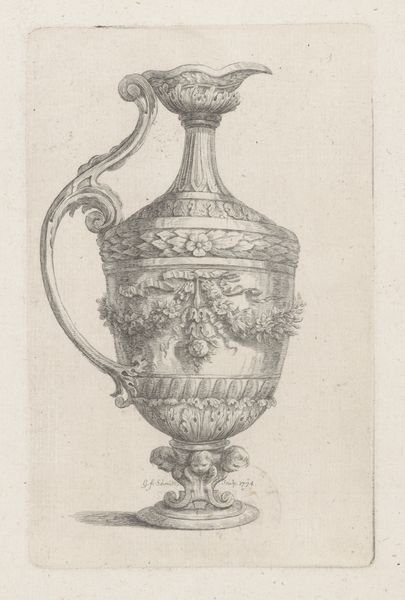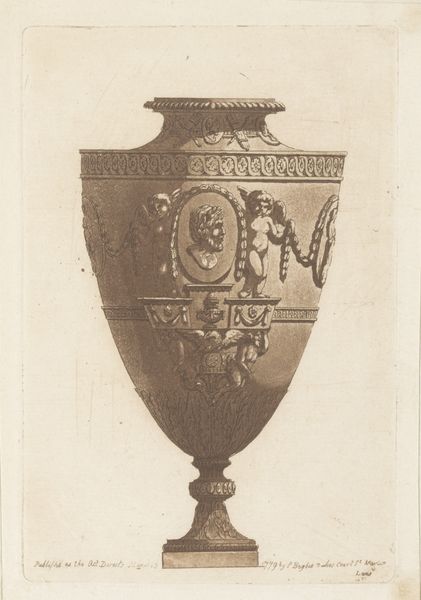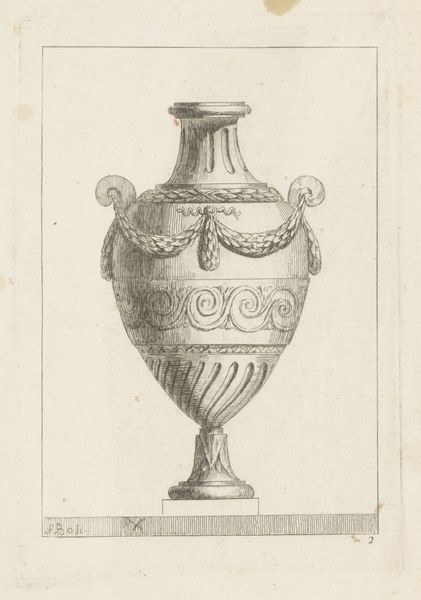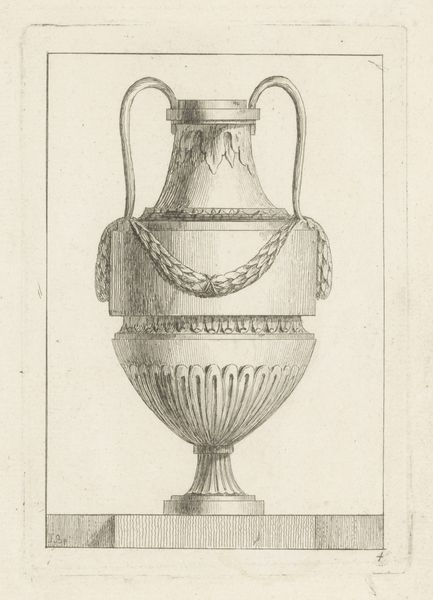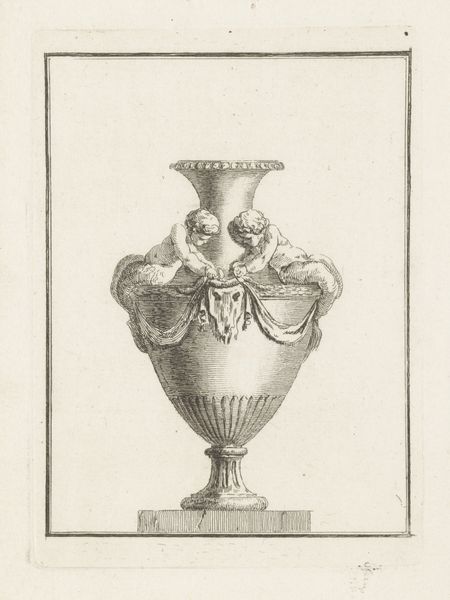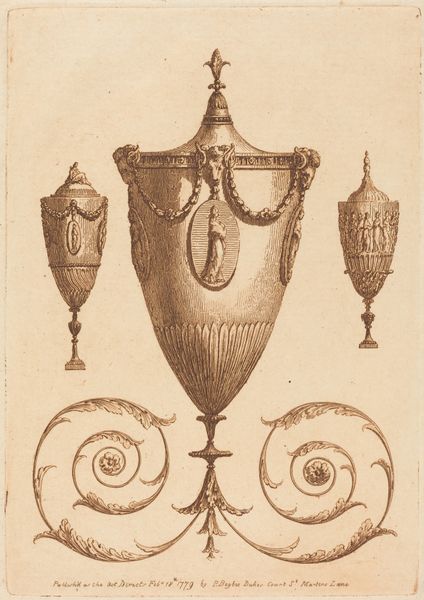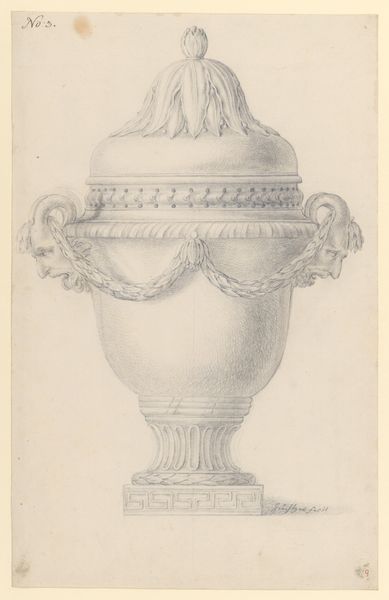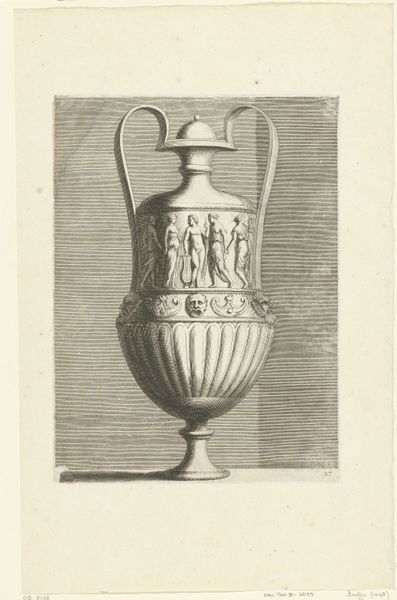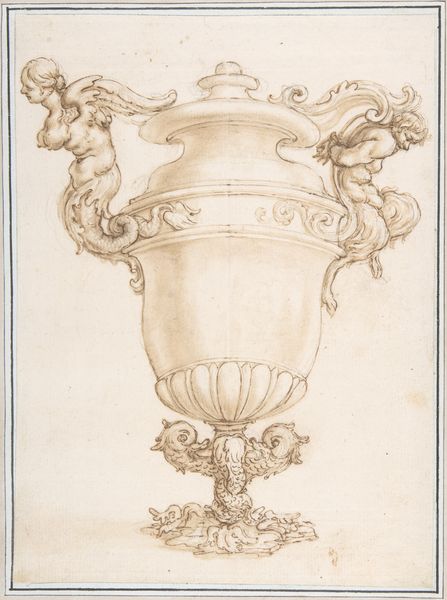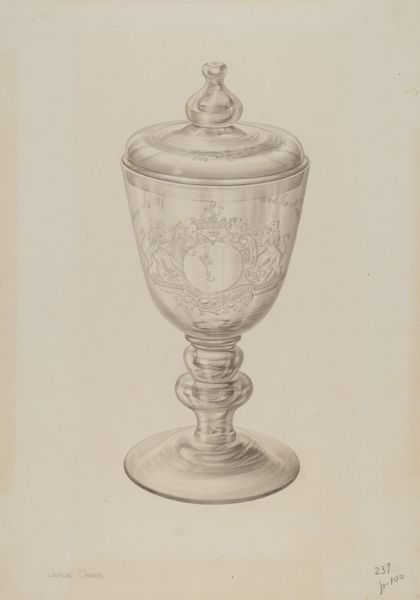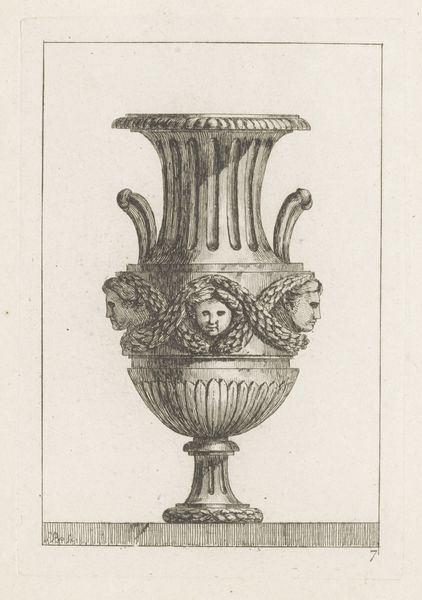
drawing, print, paper, pen
#
drawing
#
neoclacissism
# print
#
paper
#
pen
Dimensions: height 154 mm, width 111 mm
Copyright: Rijks Museum: Open Domain
Curator: This is a print called "Drie antieke vazen," which translates to "Three Antique Vases," potentially made in 1779 by Patrick Begbie. It resides here at the Rijksmuseum and is rendered in pen and ink on paper. What strikes you first about this piece? Editor: The uniformity of the brown ink gives a sense of timeless elegance, a classical stillness. Despite the detail in the garlands and figures, they somehow feel hushed and almost ghostly. Curator: The choice to depict these urns through the medium of print and drawing is important to contextualize. Printmaking democratized the consumption of classical designs at this time, fueling trends that resonated through decorative art. Who had access to these kinds of depictions, and why? What messages do these vessels broadcast in domestic space? Editor: The visual vocabulary of Neoclassicism is so powerfully present: acanthus leaves, cherubic figures, and the idealized human form. Those ubiquitous garlands suggest not just beauty, but perhaps sacrifice and remembrance as well. Given the style and potential creation date, it could even be drawing on imagery inspired by recent excavations at Pompeii and Herculaneum. The past is literally brought into the present. Curator: Absolutely, these vases signify the revival of interest in antiquity, especially during a period marked by massive social upheaval and revolution. In what ways might we understand Neoclassicism as a politically charged artistic style? Was it about more than mere aesthetics? Editor: Perhaps a symbolic reaching back for stability and order? Or maybe these classical forms allowed for a kind of coded language through commonly recognized images? It reminds me that objects themselves often possess an inherent politics. Curator: I agree entirely. This detailed study reflects not only a historical fascination but also speaks volumes about the visual languages circulating during the late 18th century and their continuing resonance today. Editor: Ultimately, this seemingly simple drawing opens up such rich avenues for reflection on the complex relationship between the past, aesthetics, and the power dynamics embedded in cultural symbols.
Comments
No comments
Be the first to comment and join the conversation on the ultimate creative platform.
